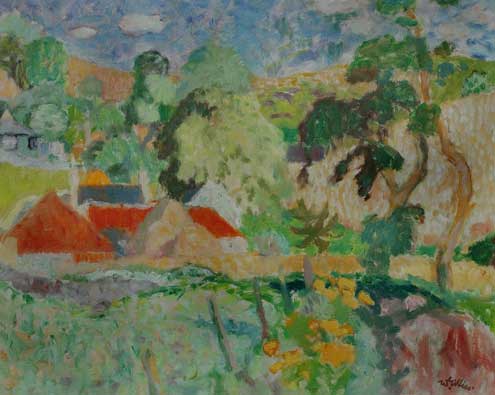Sir William Gillies C.B.E., R.S.A., P.P.R.S.W., R.A., L.L.D. (1898-1973)
Near Borthwick
Born in Haddington, East Lothian in 1898, William Gillies studied at Edinburgh College of Art (ECA), where his teachers included D M Sutherland, David Alison, Adam Bruce Thomson and Donald Moodie.
In 1922 Gillies graduated and became a founder member of the 1922 Group with Sir William MacTaggart, Robert Crozier, Geissler and others. In 1923 he received a Travelling Scholarship and visited Paris with Geissler, studying with Andre Lhote, before travelling on to Florence. In 1929, after a year teaching at Inverness Academy, Gillies joined ECA's staff, which now included MacTaggart with John Maxwell.
During the late 1920s and 1930s Gillies developed a loose, almost Expressionist style, painting the Scottish landscape on the spot, often spending painting holidays with John Maxwell and others in Dumfries & Galloway. In 1939 he moved to the Midlothian village of Temple where the surrounding landscape provided the subject for many of his later works. He visited the villages of East Linton, Haddington, Howgate and Gifford on his motorcycle, painting in oil and watercolour. In the post war period his landscapes became more complex, using intricate patterns of roofs, winding roads, fences, trees and hedges as constructive elements. Pencil and ink outlines became important in his watercolours. He also enjoyed the east coast fishing villages whose nets and boats provided similar fascination.
In 1946 he was appointed Head of Painting at ECA, becoming Principal 1960-6. Despite his full-time teaching job his art never suffered and he continued to paint landscapes, interiors and still-life right up to his death.
Oil on canvas laid on board
Signed
21 5/8 x 25 9/16 ins (55 x 65 cms)
NOT FOR SALE
Exhibited
Gillies Centenary Exhibition, Royal Scottish Academy, Edinburgh, 1 Aug - 11 Oct 1998, cat no. 149
